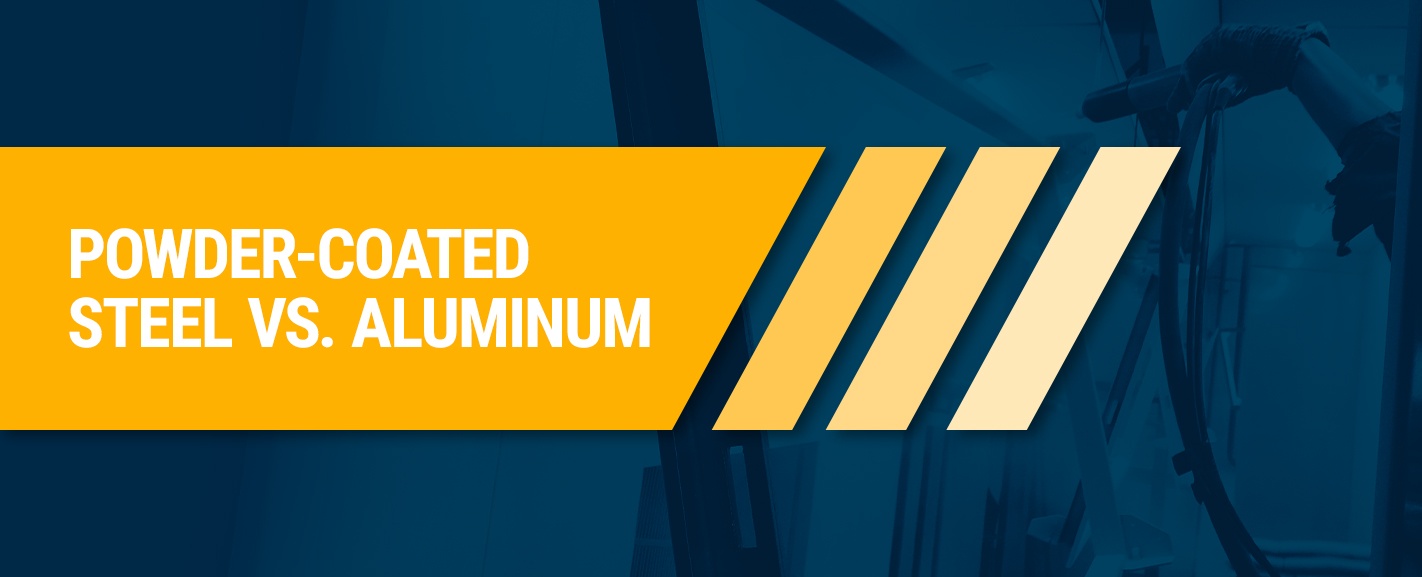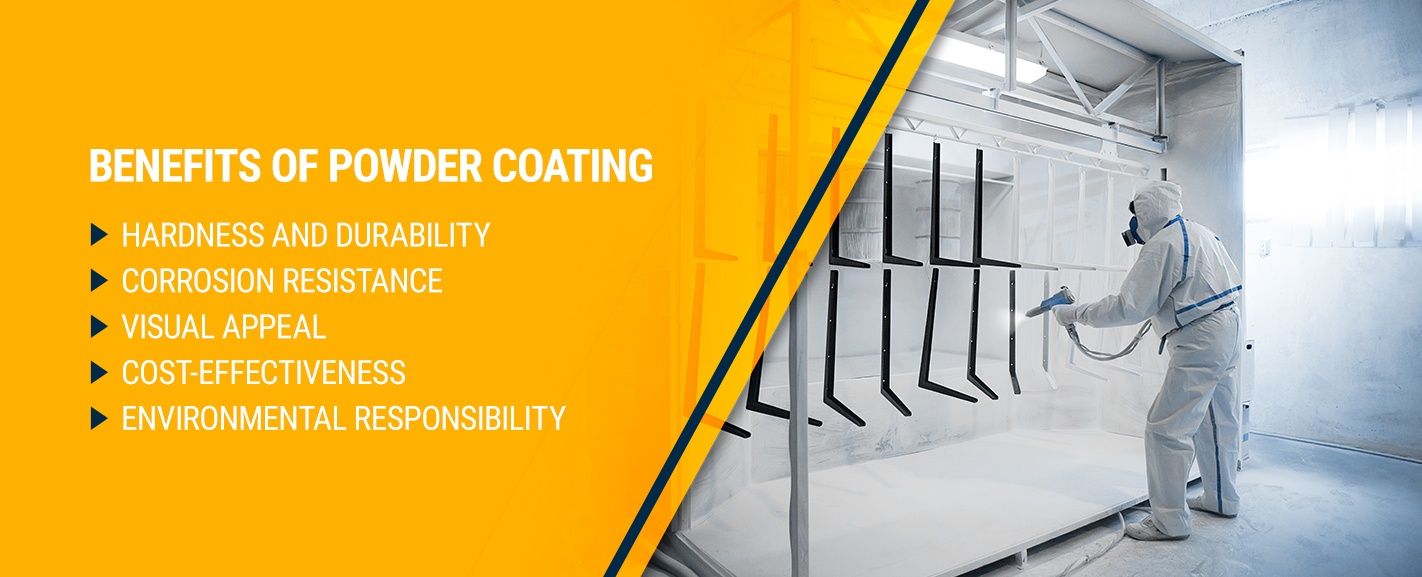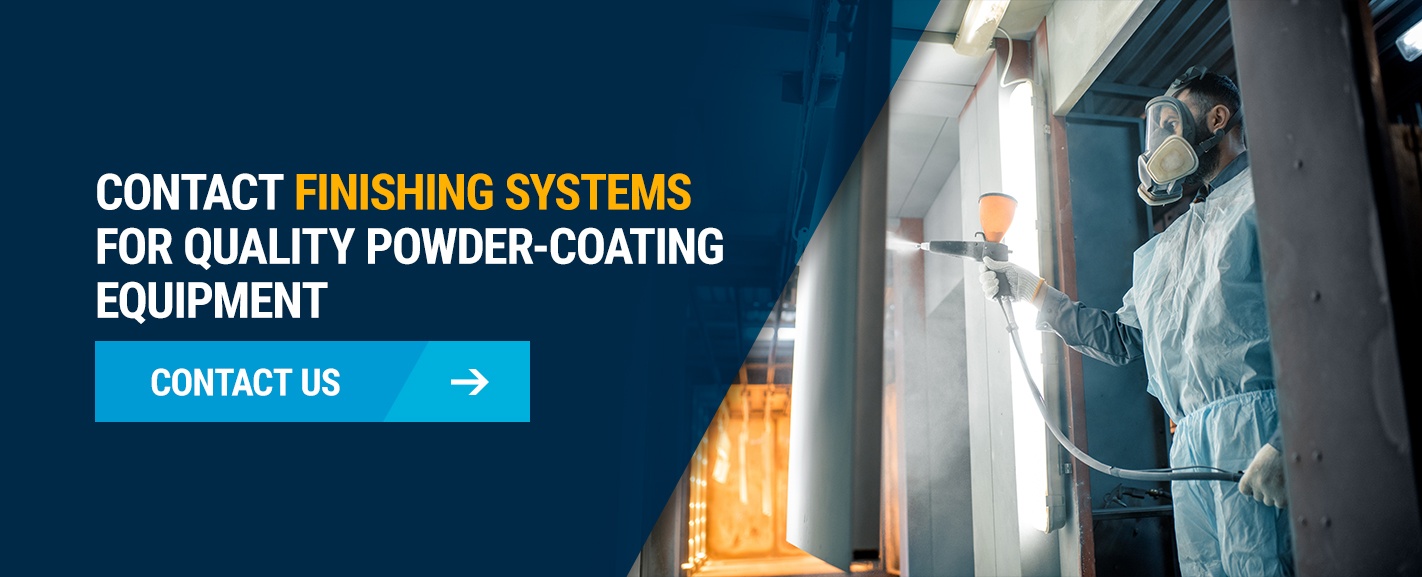
Powder-Coated Steel vs. Aluminum
Updated: February 27, 2024When your business works with metal products and components, you need reliable ways to make them stronger and more reliable. If you manufacture outdoor equipment like cranes or aerial platforms, you need them to be strong and resistant to any chemicals they encounter on the job. If you make metal patio furniture pieces, you need them to resist-weather related corrosion and rust while still looking stylish enough to catch consumers’ eyes. Powder coatings offer an ideal solution.
What is powder coating, and how does it affect metals like aluminum and steel? Does powder-coated steel rust? This guide answers these questions and many more.
What Is Powder Coating?
Powder coating is a polyester-based coating method that uses consistently sized, dry polyester microbeads. The beads have an electrostatic charge that enables them to adhere to base materials. Powder coating creates a stronger, more durable and more resilient finish than paint and is useful on products that will need to stand up to harsh weather conditions or provide years of quality use.
Applying powder coating works via a different process from the one used to apply paint and other coatings. Most coatings go on as liquids because their liquid forms are more adhesive than their dry forms. Liquid paint, for instance, goes on as an evaporating solvent.
In the powder coating process, manufacturers typically apply dry powder electrostatically with a spray gun and then cure it in a curing oven or beneath ultraviolet light, giving it exceptional durability and resistance. The curing process also allows manufacturers to apply powder coating to various materials beyond traditional metals, including carbon fiber, composites, fiberboard and plastics.
Most powder coating materials take one of two forms:
- Thermoplastics: Thermoplastics, such as nylon and polyvinyl chloride (PVC), can go through heating, molding and curing more than once. They are easy to alter post-curing, and their coats are easy to remove. They are also ductile and chemically resistant.
- Thermosets: Thermosets, including epoxy resins and phenolic resins, can go through curing only once. Once cured, though, they have greater heat resistance and are more suitable for high-temperature applications.
Powder Coating Advantages
These are a few of the benefits of using powder coating on metal surfaces:
- Hardness and durability: The curing process makes powder coatings tough and durable. The finished coating will not peel or flake.
- Corrosion resistance: The powder coating creates a barrier to protect against many different types of corrosion, including rust. Many natural metals like steel rust over time with exposure to moisture and oxygen. Powder-coating creates a protective barrier so the metal remains rust-free. Untreated aluminum does not rust, but it can oxidize to form a chalky-white substance in place of rust. Most metal parts designed for outdoor use have powder coatings to protect them from the elements and the resulting deterioration.
- Visual appeal: Powder coating also imparts an aesthetically appealing finish to metal surfaces. It is useful on metal products designed for attractiveness, such as patio furniture or visible building components, because it gives them an elegant look.
- Cost-effectiveness: Another advantage of powder coating is its cost-effectiveness compared with other strengthening methods. Manufacturers can create strong products with specific, durable alloys, but those alloys tend to be costly. For instance, stainless steel is renowned for its strength and corrosion resistance but is expensive to produce and obtain. Using carbon steel and coating it with protective powder is a much more economical solution.
- Environmental responsibility: Powder coating is also relatively environmentally friendly. It contains almost no volatile organic compounds (VOCs) and no heavy metals like chrome.
Powder-Coated Steel
Powder-coated steel combines the naturally robust character of steel with the longevity and corrosion resistance of powder coating. Its strength, durability and resistance to many types of corrosion make it suitable for use in outdoor furniture, indoor furniture frames, metal canopy frames, metallic roofs, windows and doors, scaffolding, cranes and trailers. Many outdoor products designed for strength use powder-coated steel.
Is powder-coated steel rustproof? It is, up to a point. Powder-coated steel is highly resistant to rust in most cases, so it won’t develop unsightly rust patches or leave red streaks on a patio or building facade. However, if it sustains damage, small cracks in the coating may appear, admit moisture and allow rust to form. If you’re looking for a strong, rustproof material, however, powder-coated steel is the closest you are likely to find.
Here are a few of the benefits of using powder-coated steel:
- Strength: Powder-coated steel is tremendously strong. It provides security and peace of mind in architectural applications and makes for dependable furniture as well.
- Longevity: Powder-coated steel is highly durable. Its efficient coating makes a tight seal to keep out contaminants and enable the steel to last longer.
- Thick, consistent finish: An paint application may clump in some areas and remain thin in others. Powder-coating provides a thick, even finish for more consistent protection.
- Aesthetic appeal: Untreated steel may look rugged and unrefined, but powder-coated steel can be beautiful. Finishes in numerous styles and colors mean powder-coated steel products enhance the decor of any building.
- Corrosion resistance: Like other powder-coated metals, powder-coated steel is highly corrosion-resistant. Its coating acts as an impenetrable barrier to keep moisture and other contaminants out, so corrosion cannot gain a foothold in the metal.
Powder-Coated Aluminum
Powder-coated aluminum blends the lightweight properties of aluminum with the resistance and longevity of powder coating. It is easy to transport, and it stands up well to harsh weather conditions without corroding. It is highly suitable for products such as metal patio furniture, metal railings, doorknobs, door frames and window frames.
These are a few of the benefits of using powder-coated aluminum:
- Lightness: Powder-coated aluminum is light and easy to move. It makes furniture rearrangements and product shipments efficient and effortless.
- Durability: Despite its lightness, powder-coated aluminum is tough. It can withstand rigorous outdoor use and last for years.
- Elegance: Though it is strong and dependable, powder-coated aluminum is also aesthetically pleasing. The variety of possible colors and stylish shapes makes powder-coated aluminum products appealing as furniture or decor.
- Corrosion resistance: Like other powder-coated metals, powder-coated aluminum is advantageous because of its corrosion resistance. It shuts out moisture and other contaminants to keep products corrosion-free.
Contact Finishing Systems for Quality Powder-Coating Equipment
To see the benefits of working with corrosion-resistant material in your operations, partner with Finishing Systems for finishing equipment. Our powder-coating booths enable you to provide resistant, reliable powder coatings to boost your products’ quality and longevity.
You can choose from several options to suit your unique finishing needs. We offer completely integrated turnkey systems, compact batch booths for small spaces, automated conveyor systems for high-volume coating projects and various parts and accessories to help your equipment maintain its optimal performance.


